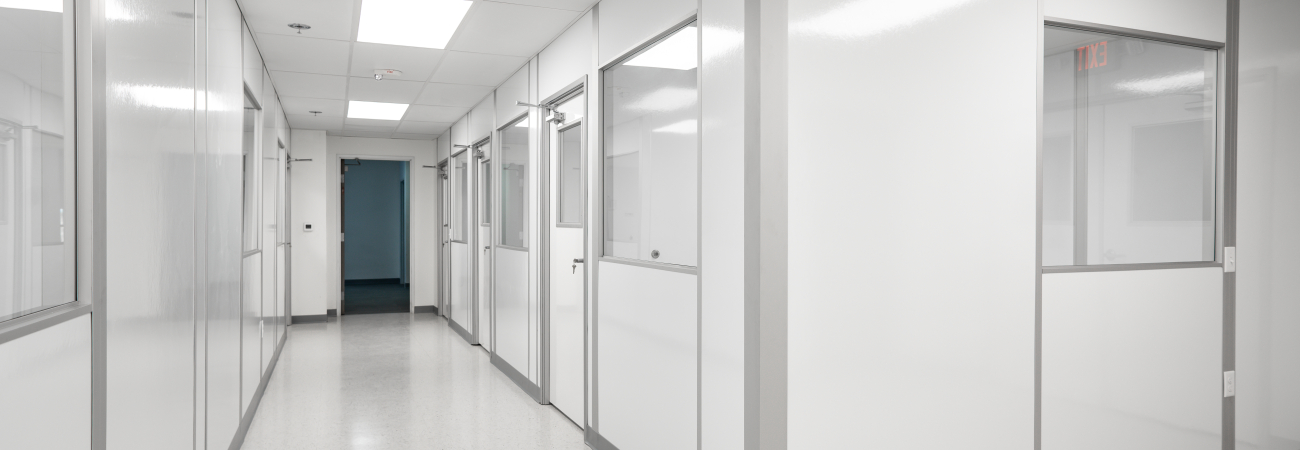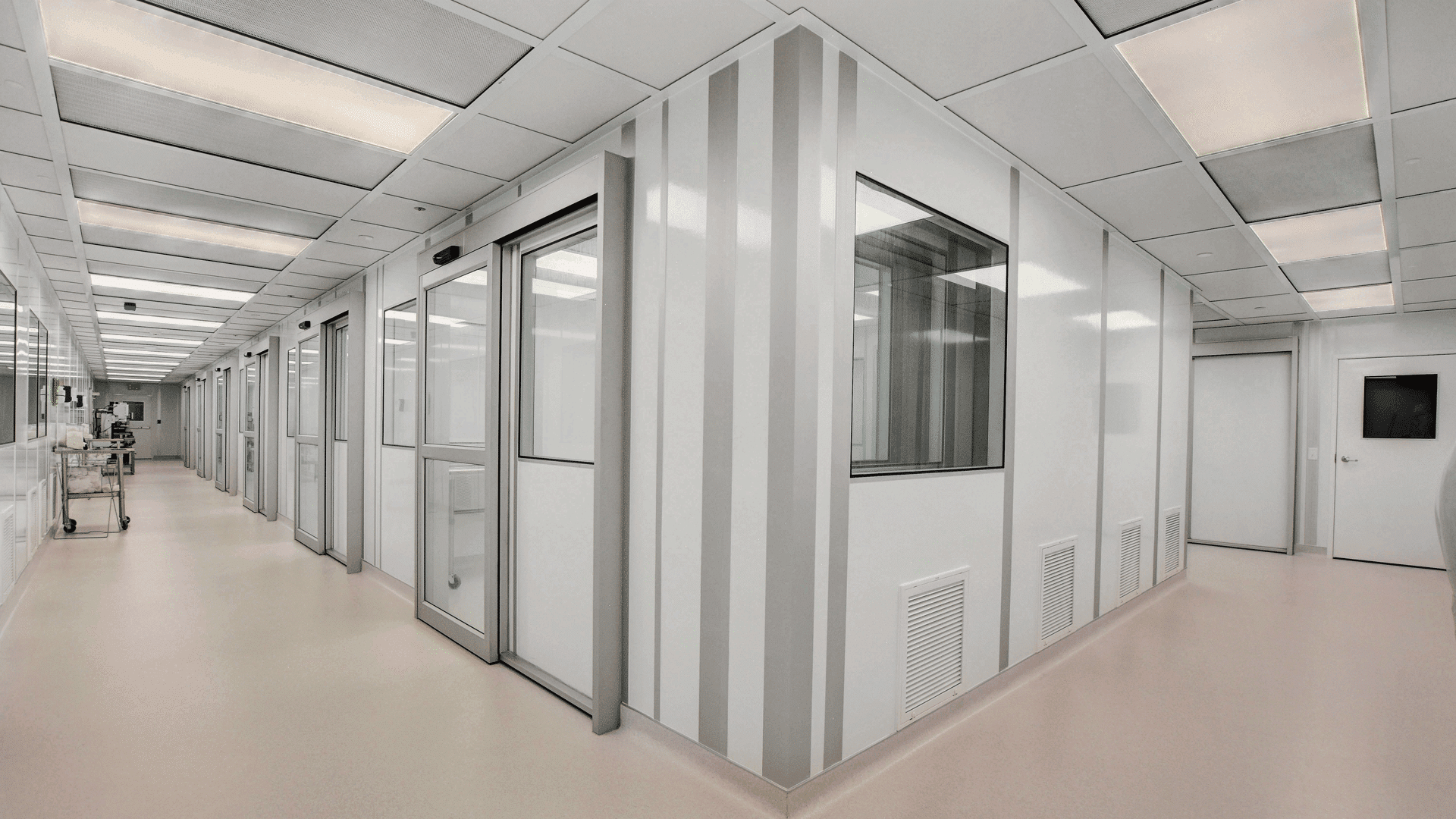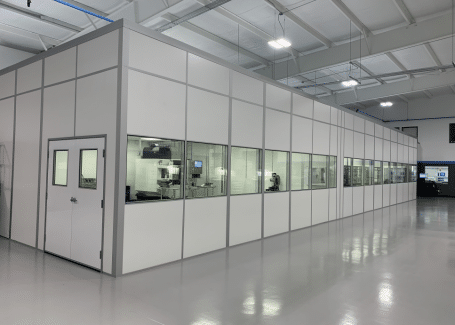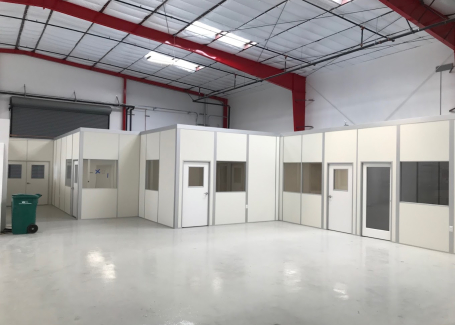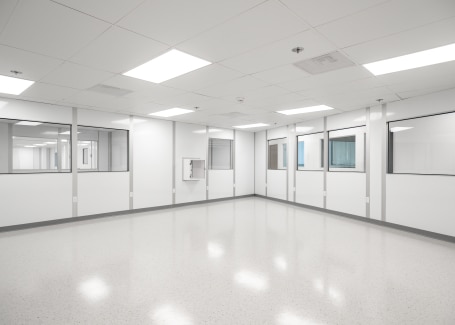If your cleanroom falls short on air change rates, it won’t just be a minor issue; it’s a compliance risk. Regulations often demand strict air change requirements in order to prevent contamination, protect products, workers, and consumers. If your cleanroom fails to meet such standards, it may lead to failed inspections, product recalls, or even the shutting down of your operation.
As a result, it’s an absolute necessity to understand cleanroom air change rates and the many factors that can affect them. So, in this article, we’ll break down the required air changes for ISO cleanrooms, why they matter, and more.
Why Cleanroom Air Change Rates Matter
With cleanrooms, strict regulations are common. And reaching the proper air change rates is part and parcel of both attaining and maintaining compliance.
Cleanroom engineers often have to figure out the necessary air changes per hour (ACH) to keep contamination under control in a space. The higher the number of ACH, the cleaner the room will be (generally speaking).
The International Organization for Standardization (ISO) is the body that classifies cleanrooms based on the number and size of particles allowed per cubic meter. Each ISO class has a recommended air change rate to achieve the required cleanliness level. For instance, an ISO Class 5 cleanroom may need 240-480 ACH, whereas an ISO Class 7 cleanroom requires 60-90 ACH.
All this means is that cleanroom engineers must carefully calculate and maintain the appropriate ACH to meet the right ISO classification.
Standard Cleanroom Air Change Rates (ISO Requirements)
Each ISO classification has a recommended air change rate per hour to maintain air quality. Below is a breakdown of ACH requirements for different cleanroom classifications:
| ISO Class | Air Changes Per Hour Range |
|---|---|
| ISO 1 | 500-750 ACH |
| ISO 2 | 500-750 ACH |
| ISO 3 | 360-540 ACH |
| ISO 4 | 300-480 ACH |
| ISO 5 | 240-480 ACH |
| ISO 6 | 150-240 ACH |
| ISO 7 | 60-90 ACH |
| ISO 8 | 5-48 ACH |
These numbers are only estimates and can vary significantly, depending on factors such as room size, design, number of occupants, and specific cleanroom activities.
How Are Cleanroom Air Change Rates Determined?
While ISO standards give recommended air change rates, the exact number needed for a cleanroom depends on more than just a simple classification. Things like industry-specific regulations, contamination risks, room activity, and HVAC efficiency all contribute to determining the right air change rates.
The way a cleanroom is used also matters. A space with a lot of foot traffic or personnel movement may introduce more contaminants than one with low-occupancy, so more frequent air changes might be needed to compensate. The design of the HVAC system, airflow patterns, and filtration setup can further impact how often air needs to be replaced.
Because of all these different variables, cleanroom engineers need to carefully plan and assess each space’s specific needs when determining the right air change rate. The goal isn’t just to meet ISO standards, but to create an environment that keeps a certain level of air purity.
How Air Loss and Movement Affect Air Change Rates
Even if your cleanroom reaches the right air change rate, air quality doesn’t stay the same, especially uniformly throughout the space. Remember, air is constantly moving, and various factors can lead to air loss or contamination risks. In order to create a stable cleanroom environment, it’s also important to understand just how air escapes, circulates around equipment, and responds to other kinds of movement.
How Air Loss Occurs in a Cleanroom
Air can escape from a cleanroom in several ways, which can potentially affect HVAC performance and as a result, contamination control:
- Door Openings: Whenever a door opens, clean air can escape, or outside air may enter.
- Personnel Entry: Every time workers enter or exit, they bring in particles from their clothing, skin, and the surrounding environment (in fact, people are one of the biggest contributors to contamination in cleanrooms).
- Openings/Leaks in Walls, Ceilings, or Flooring: Small gaps or improperly sealed surfaces and seams can allow air to escape or enter.
- Equipment: Some machinery, like fume hoods or production equipment, may remove air as part of its function. If not properly accounted for, this can affect pressure. (Many cleanrooms depend on positive or negative pressure to create a controlled environment [positive to keep particles out, negative to keep them in]).
If too much air is lost or unfiltered air enters, it can make it harder to maintain the required air change rate (ACH) and meet cleanliness standards.
How Air Moves Over Equipment and Surfaces
Furthermore, clean air doesn’t just replace contaminated air; it also needs to move strategically to particles from settling in certain areas. Airflow patterns in cleanrooms are carefully designed to push contaminants away from certain work areas, to prevent turbulence that can suspend particles, and to direct air towards return vents for additional filtration.
How air moves over equipment and surfaces can also affect how uniformly clean air is distributed throughout the space. Some machines, especially those that generate heat, move parts, or use exhaust systems, can create turbulence or block clean air from reaching certain areas. If airflow patterns are disrupted, air may recirculate contaminants instead of removing them, leading to areas where particles may settle.
The Impact of Movement on Air Change Rates
As you might’ve guessed already, every movement in a cleanroom, whether it’s someone walking, a cart being rolled in, or some type of moving equipment, can disturb the airflow within cleanrooms.
Because of this, cleanrooms need to recover quickly after disturbances. The air change rate must be high enough to restore optimal cleanliness within an hour after such dynamic activities occur. Engineers take this into account when setting ACH levels to ensure that even after significant movement, the environment returns to a controlled state fast enough to maintain compliance.
The Bottom Line
Cleanroom air change rates aren’t simply a recommendation; they’re a necessary part of reaching compliance. Engineers must ensure that air changes are high enough to keep up with ISO standards, prevent air loss, and allow for quick recovery after movement. The right ACH keeps cleanrooms controlled.


